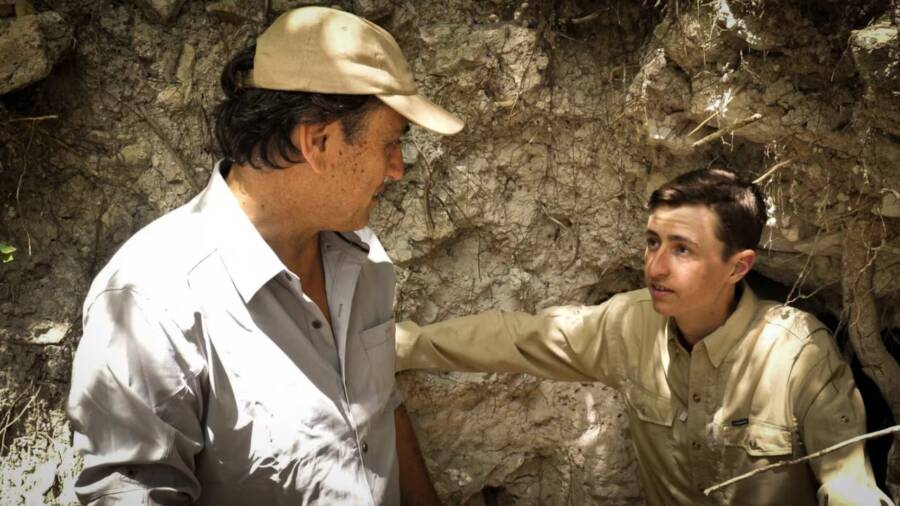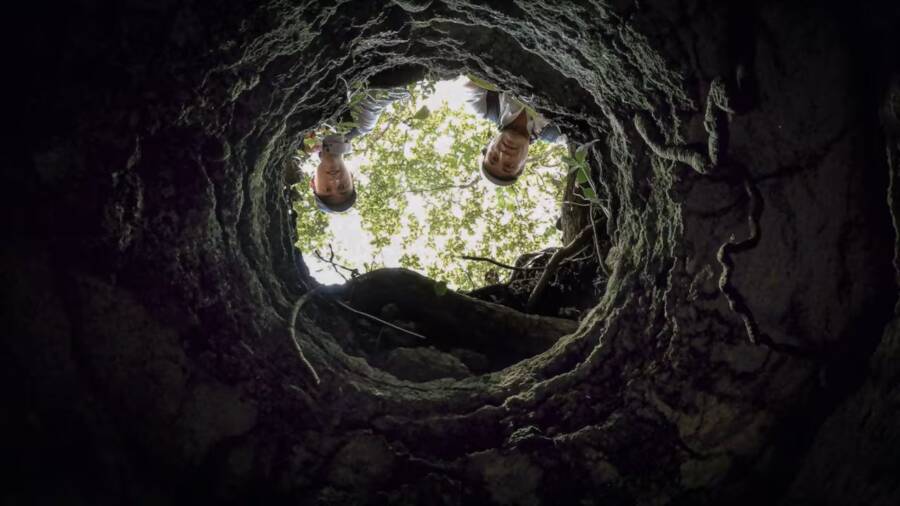The 15-Year-Old Who Uncovered A Potential Lost Maya City Thanks To Google Maps

CBC/The Teenager and the Lost Maya CityArchaeologist Francisco Estrada-Belli (left) with William Gadoury in Mexico.
In 2016, a story emerged from Quebec that captivated the world: then-15-year-old William Gadoury claimed to have found a lost Maya city using nothing more than star charts and Google Earth.
Gadoury explained at the time that his fascination with the Maya civilization had begun in 2012 when he was gifted books from Mexico about the ancient culture.
During his research, he noticed something about the locations of Maya cities. “The Mayans were extremely good builders,” he observed, “but they often built in places that made little practical sense — far from rivers, far from fertile areas.”
This observation led him to develop a theory that would ultimately change his life.
The teenager hypothesized that the Maya positioned their cities to correspond with constellations. To test the idea, he compared 22 constellations with the locations of 117 known ruins. Remarkably, the cities aligned with his ancient star charts. But when he examined a 23rd constellation, something was missing: There was no corresponding city.
Determined to solve this mystery, Gadoury turned to Google Earth satellite images, searching the Yucatán Peninsula for signs of vegetation disturbed by buried structures. Eventually, he identified what appeared to be the outlines of pyramid platforms in a remote area.

CBC/The Teenager and the Lost Maya CityGadoury traveled to the Yucatán Peninsula in 2022 to try and find the lost city for himself.
His research earned him victory at his school’s science fair and even attracted attention from the Canadian Space Agency. Daniel Delisle, a liaison officer, was impressed enough to provide Gadoury with access to high-definition satellite imagery. The enhanced images seemed to support the young researcher’s theory, showing rough outlines of possible pyramid platforms.
Gadoury named his potential discovery “K’aak Chi,” meaning “Mouth of Fire.” If verified, experts suggested it could have been one of the largest Maya cities ever found.
However, the story took a different turn in subsequent years. Experts criticized Gadoury’s approach as a flaw of “Western” science, saying that maps as we know them today could not be applied to ancient cultures, among other critiques. Still, many admired his passion and creativity.
Gadoury remained undeterred, though. In 2022, the CBC reported that a now 21-year-old Gadoury was the subject of a documentary titled The Teenager and the Lost Maya City, which followed Gadoury and an expert expedition team through the jungles of the Yucatán Peninsula to search for the lost city.
While they didn’t find Gadoury’s K’aak Chi, they did find something else: an ancient farming hamlet deep in the Mexican jungle.
Recent archaeological excavations have also revealed that the Maya population may have actually been much larger than previously thought, and many Maya lived in hamlets like the one Gadoury found. Even if his theory hadn’t been 100 percent accurate, the years following the discovery of this hamlet have shown that these sites were far more important to Maya culture than anyone knew at the time.
“If you had told me at the end of my first science fair that my hypotheses would one day give me the opportunity to go into the Mexican jungle and see an unseen structure, I would say, ‘Okay, that’s impossible,'” Gadoury said.
“So, just have patience.”





